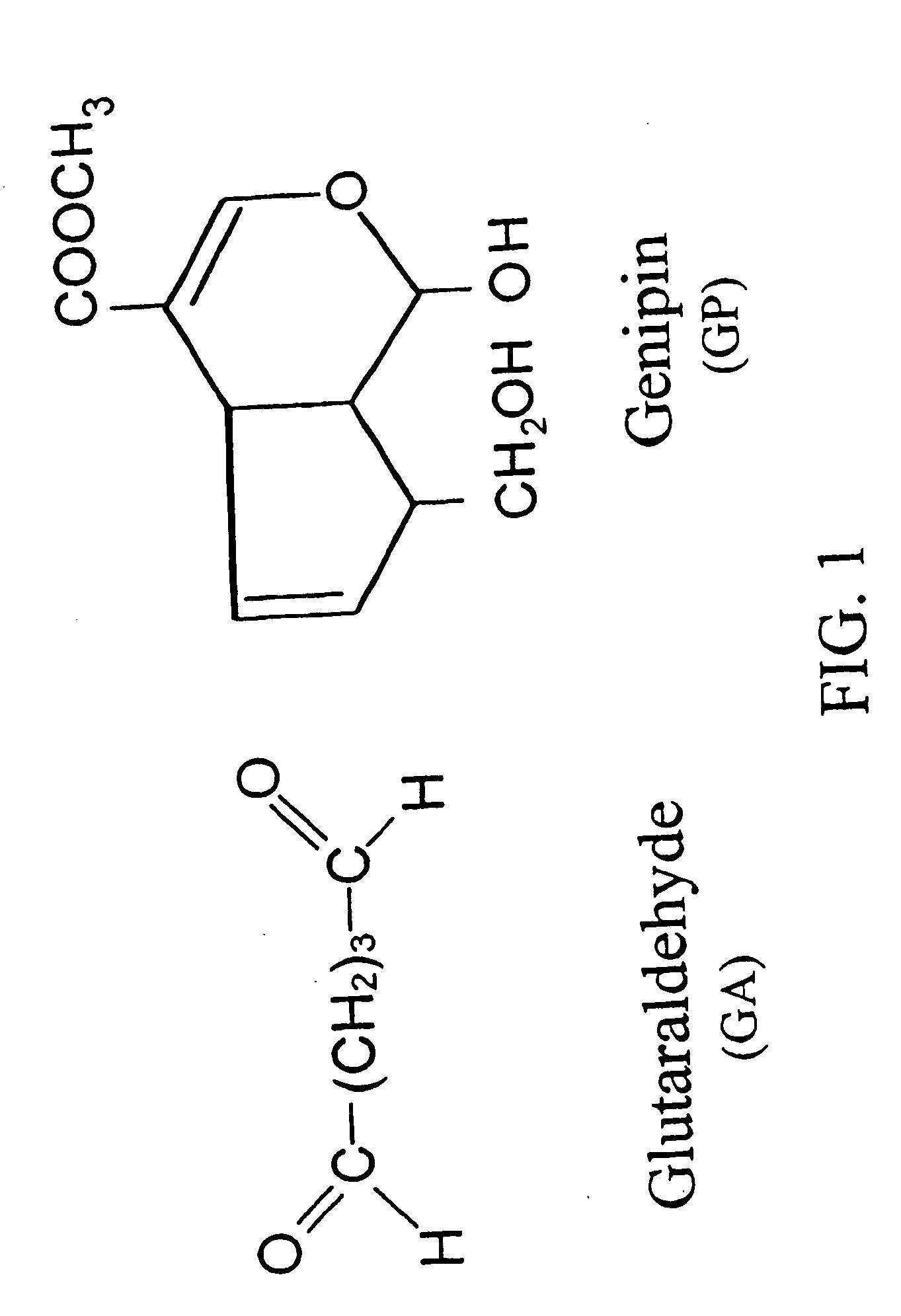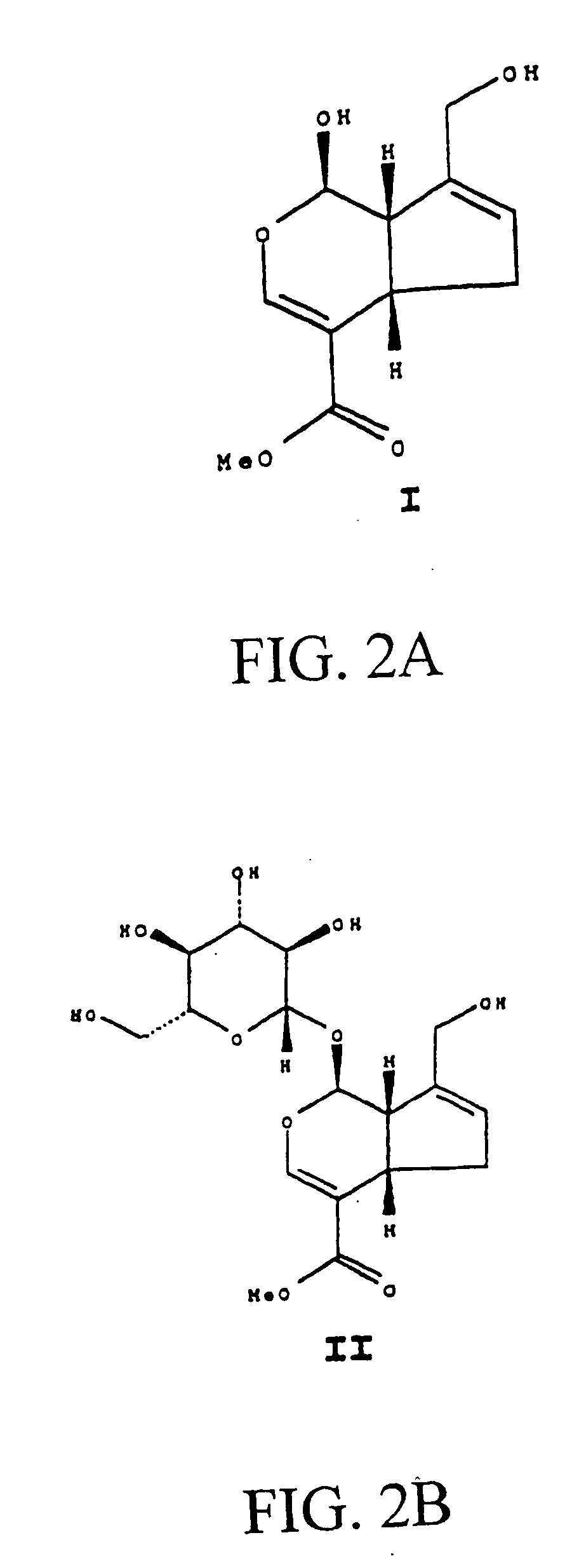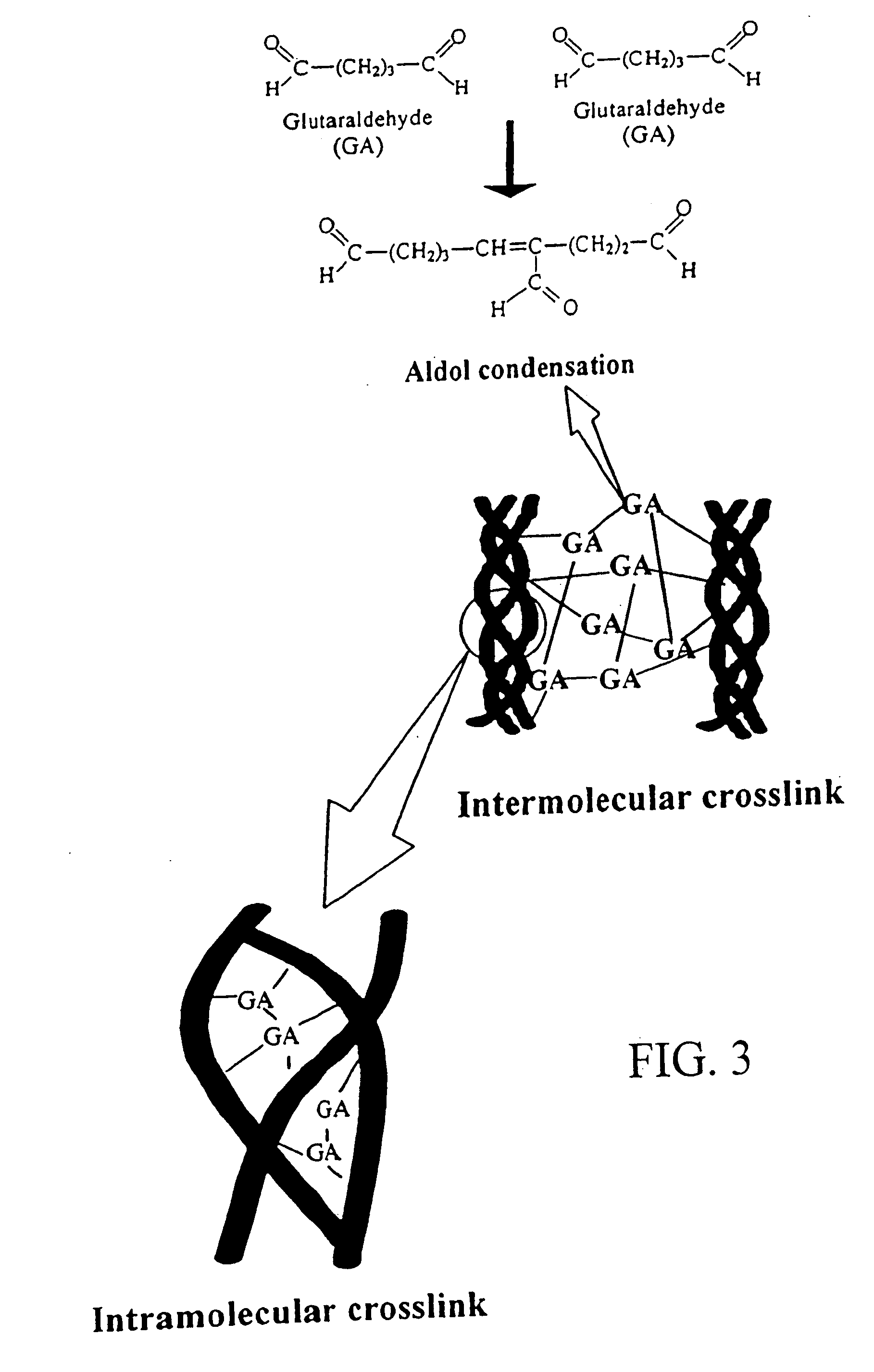Drug-eluting stent having collagen drug carrier chemically treated with genipin
a stent and drug carrier technology, applied in the field of chemical modification of biomedical materials, can solve the problems of easy degradation of collagen by collagenase, low tensile strength, and impair the biocompatibility of biological tissu
- Summary
- Abstract
- Description
- Claims
- Application Information
AI Technical Summary
Benefits of technology
Problems solved by technology
Method used
Image
Examples
example # 1
EXAMPLE #1
[0189] Dissolve chitosan powder in acetic acid at about pH 4. Chitosan (MW: about 70,000) was purchased from Fluka Chemical Co. of Switzerland. The deacetylation degree of the chitosan used was approximately 85%. Subsequently, adjust the chitosan solution to approximately pH 5.5 (right before it becomes gelled) with NaOH. Add in drug(s) of interest into the chitosan solution. While loading the drug-containing chitosan onto a stent, adjust the environment to pH 7 with NaOH to solidify the chitosan onto the stent. The process can be accomplished via a continuous assembly line step by providing gradually increasing pH zones as the device passes by. It is further treated with a crosslinking agent, for example genipin to enhance the biodurability and biocompatibility. Note that the chemical formula for chitosan can be found in Mi F L, Tan Y C, Liang H F, and Sung H W, “In vivo biocompatibility and degradability of a novel injectable-chitosan based implant.” Biomaterials 2002;23...
example # 2
EXAMPLE #2
[0190] Add at least one drug of interest into a collagen solution at 4° C. While loading the drug-containing collagen onto a stent, adjust the environment temperature to about 37° C. to solidify the collagen onto the stent. The process can be accomplished via a continuous assembly line step by providing gradually increasing temperature zones as the device passes by. The loading step can be repeated a few times to increase the thickness or total quantity of the drug-containing collagen. The loading step can be started with a high-does drug-containing collagen and then loaded with a lower dose drug-containing collagen or vice versa. It is further treated with a crosslinking agent, for example genipin to enhance the biodurability and biocompatibility. The fixation details could be found elsewhere by Sung et al. (Sung H W, Chang Y, Liang I L, Chang W H and Chen Y C. “Fixation of biological tissues with a naturally occurring crosslinking agent: fixation rate and effects pf pH, ...
example # 3
EXAMPLE #3
[0191] Add drug and stent in a NOCC solution at room temperature. The NOCC (named after “Nitrogen Oxygen carboxylmethyl chitosan”) is a chitosan derived compound that is pH sensitive and can be used in drug delivery. This NOCC is water soluble at pH 7. Crosslink the NOCC and drug onto the stent by a crosslinking agent, for example genipin. This is a step of solidification. In one aspect of the present invention, after crosslinking, the drug containing NOCC can be made harder or more solid-like, if needed, by low pH at about 4. The finished stent slowly releases drug when in the body at a pH around neutral.
PUM
| Property | Measurement | Unit |
|---|---|---|
| Biological properties | aaaaa | aaaaa |
| Circumference | aaaaa | aaaaa |
| Biodegradability | aaaaa | aaaaa |
Abstract
Description
Claims
Application Information
 Login to View More
Login to View More - R&D
- Intellectual Property
- Life Sciences
- Materials
- Tech Scout
- Unparalleled Data Quality
- Higher Quality Content
- 60% Fewer Hallucinations
Browse by: Latest US Patents, China's latest patents, Technical Efficacy Thesaurus, Application Domain, Technology Topic, Popular Technical Reports.
© 2025 PatSnap. All rights reserved.Legal|Privacy policy|Modern Slavery Act Transparency Statement|Sitemap|About US| Contact US: help@patsnap.com



